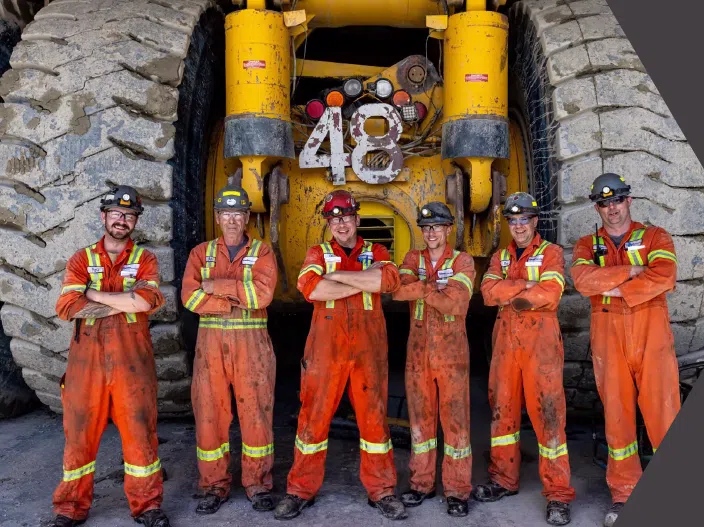Yellowhead Copper Project Draws Strong Community Interest
August 14, 2025
The Thompson-Nicola Regional District Board of Directors received an in-depth update this week on the proposed Yellowhead copper mine, a project that could become one of Canada’s largest copper producers and a major economic engine for the region.
Presented by Cora DeWalt-Gagnon, Project Manager and a Tk’emlúps te Secwépemc band member, the session highlighted key aspects of the mine’s design, purpose, Indigenous-led regulatory process, and its potential impact on communities like Vavenby, Birch Island, and Barriere.
“The purpose is to provide a responsible source of copper to support the energy transition while creating socio-economic benefits within the region,” said DeWalt-Gagnon. “Copper is the metal of electrification—and demand is expected to double by 2035.”
Major Economic Boost and Job Opportunities
Taseko Mines, the company behind the project, anticipates a $17 billion total revenue from Yellowhead over its 25-year mine life, including $10.9 billion in economic contribution to the TNRD and thousands of jobs.
“During construction alone, we expect about 2,000 jobs,” DeWalt-Gagnon told the board. “And throughout the life of the mine, around 590 permanent roles will be supported.”
She also noted a focus on local hiring and equity, emphasizing that 100% of Yellowhead’s hires in 2024 came from the surrounding region, and the current team is entirely made up of women.
“For anyone who knows me, equity, diversity, and inclusion are passions of mine,” she said. “I didn’t grow up thinking mining was for me. I didn’t know these jobs even existed—and that’s something I want to change.”
Strong Community Interest and Support
Open houses held earlier this year in Vavenby, Clearwater, and Barriere drew unusually high interest. According to DeWalt-Gagnon, community turnout “blew us away.”
“Even the Environmental Assessment Office said the attendance was unheard of,” she said. “People asked, ‘How fast? When are jobs coming? Where can I apply?’ That level of excitement was amazing.”
Environmental Oversight and Indigenous-Led Process
The Yellowhead project is currently in Step 2 of the Simpcw First Nation’s assessment process, which DeWalt-Gagnon described as “an Indigenous-led, consent-based process” that ensures the mine aligns with Simpcw values, laws, and priorities.
The project entered both the federal and provincial environmental assessment streams on July 7, kicking off a years-long process that includes impact assessments, permitting, construction (estimated at 2–3 years), and then operations.
“We’re fortunate to be in a mine-friendly jurisdiction with access to power, rail, and highways,” she noted. “But that doesn’t reduce our responsibility to do this right. We’re committed to transparency and collaboration every step of the way.”
Director Questions Highlight Local Concerns
Following the presentation, several directors raised questions around visibility, infrastructure impact, transportation, and lessons from past industrial projects.
Director John Ranta asked about the mine’s visibility from Highway 5. “You won’t see it from the highway,” said DeWalt-Gagnon. “The site is located up forest service roads in Vavenby, with the rail loadout facility in the town itself.”
Director Mike Grenier raised concerns about water infrastructure in the area. “While our community investment program is still small—we’re not in production yet—we’re open to feedback,” DeWalt-Gagnon responded. “That’s part of the EA process: understanding what impacts might arise and how we can address them.”
Director Lee Onslow referenced the worker camp challenges during the Trans Mountain pipeline project and asked whether Taseko had consulted lessons learned from that experience. “Yes, we’ve reviewed that report—I believe it was called the ‘What We Heard’ report,” DeWalt-Gagnon said. “While some of the people I engaged with have since moved on, our Vancouver team remains in contact with Trans Mountain.” The Yellowhead camp, she added, will be self-contained and located on-site, with no plans to rely on local services.
Director Mike Getz, a former miner himself, asked about the timeline for production and whether other metals like gold or silver would be recovered. “Copper is the primary mineral,” DeWalt-Gagnon confirmed. “But yes, we also expect byproducts of gold and silver. And we have extensive baseline and geotechnical studies in place—including historic data from a previously proposed mine at the same site.”
She added that actual copper production and sales wouldn’t begin for at least five to seven years, depending on how long the assessment and permitting take. “We’ve just entered the EA process,” she said. “After that, we’d move into permitting, then construction, and then begin production.”
Transportation and Export
Director Doug Haughton asked about the mine’s export route. “Product will be trucked to our rail loadout facility in Vavenby—at the former Weyerhaeuser site—and then shipped by rail to the Port of Vancouver,” said DeWalt-Gagnon.
Next Steps: Public Engagement
As the Yellowhead project moves through the environmental assessment process, there are several upcoming opportunities for community members to get involved and share their feedback.
A virtual information session will be held on September 4, which requires advance registration. An in-person open house is scheduled for September 10 from 4 to 7 PM, providing a chance to speak directly with project representatives and learn more. The public comment period remains open until September 15, allowing residents to review the project details and submit input online. Additionally, Taseko’s team hosts regular “Coffee & Conversations” at their Barriere office every third Wednesday of the month from 10 AM to 2 PM—with the next session taking place on August 20.
“If anyone wants to stop by and chat, our team is at the Barriere office,” said DeWalt-Gagnon. “We’re here to listen, answer questions, and share what we know.”
Author: Jeff Andreas - RadioNL Kamloops


